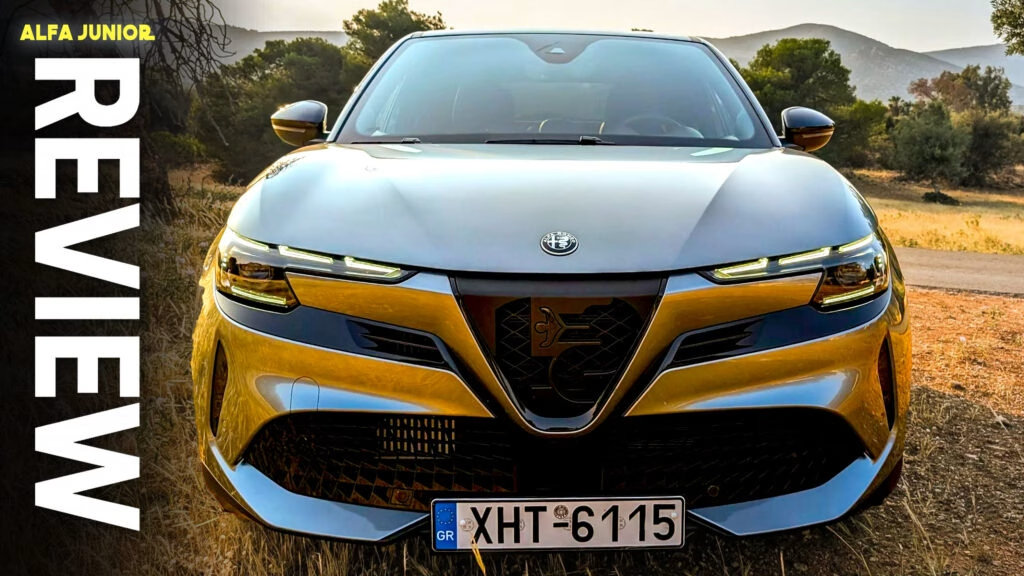Is the Alfa Romeo Junior Ibrida the Breakthrough Small SUV Alfa Needs?
Why Did Alfa Romeo Bet Big on the Junior?
Alfa Romeo has always been a brand that stirs the soul, but let’s be honest—recent years haven’t been easy. The Tonale tried to shoulder the weight of the company’s future, but it was never going to be a runaway hit on its own. The Giulia and Stelvio, while beloved by enthusiasts, just didn’t rack up the sales numbers to keep Alfa thriving. Enter the Junior: a subcompact SUV aimed squarely at Europe’s hottest segment, and a model that could finally give Alfa the volume it craves.
What’s Under the Hood and How Does It Stack Up?
The Junior Ibrida, launched in 2024, is Alfa’s first foray into the small SUV world. It comes with a 1.2-liter three-cylinder turbo mild-hybrid setup, delivering 134 hp and 230 Nm of torque. There’s also a 28 hp electric motor integrated into the six-speed dual-clutch automatic, sending power to the front wheels. No manual here—Alfa’s betting on convenience and efficiency.
On paper, 0-100 km/h in 8.9 seconds and a top speed of 206 km/h are respectable for the class. Real-world fuel consumption during testing hovered around 7 liters/100 km (33.6 mpg), which is competitive but not class-leading. The 0.89 kWh battery isn’t meant for long electric-only stretches, but it smooths out city driving and boosts efficiency.
How Does the Junior Look and Feel in Person?
Design is where Alfa usually shines, and the Junior doesn’t disappoint—at least from most angles. It’s the first production model to showcase Alfa’s new design language under Alejandro Mesonero-Romanos. The new Scudetto grille, now more integrated and less fussy, gives the Junior a clear family identity. The offset license plate is gone, making the front end cleaner and more modern.
Up close, the Junior’s muscular curves and sporty details set it apart from its Stellantis siblings (think Fiat 600, Jeep Avenger, Opel Mokka, Peugeot 2008). Some might find the nose a bit busy and the rising beltline reminiscent of the Peugeot 2008, but the overall effect is undeniably more exotic than most small SUVs. The Speciale trim adds 18-inch alloys and red accents, plus a striking bi-tone paint option for extra flair.
Is the Interior as Premium as the Price Tag Suggests?
Step inside, and the Junior greets you with a driver-focused 10.1-inch infotainment screen and a 10.25-inch digital cluster—both sharp and easy to use. Physical controls for climate and key functions are a welcome touch, and the ambient lighting adds a bit of drama at night. The six-speaker audio system is surprisingly punchy for this segment.
Here’s where things get a bit less rosy: hard plastics dominate most surfaces, and while the seats and touchpoints are comfortable, the overall vibe isn’t quite premium. Rear seat amenities are basic—no A/C vents, no door pockets, just a single USB port. On the plus side, rear space is decent and the 415-liter boot is generous for the class.
How Does the Junior Drive—Is It Still an Alfa at Heart?
Alfa’s reputation is built on driving excitement, so expectations are high. The Junior Ibrida’s mild-hybrid system makes the small engine feel lively enough for city and highway use. The dual-clutch auto is smooth, and the electric motor fills in the torque gaps, especially at low speeds.
That said, the steering is lighter than you’d expect from an Alfa—easy for parking, but lacking the feedback that makes the brand special. The suspension is firmer than most small SUVs, giving the Junior a planted feel without sacrificing comfort. Around town, it’s nimble and quiet, but if you’re hoping for the playful edge of a Giulia or Stelvio, you might be left wanting.
For those craving more, the upcoming Ibrida Q4 with all-wheel drive and the fully electric Junior Veloce (278 hp!) promise a sportier experience. But until we get behind the wheel of those, the base Junior is more about competent, comfortable commuting than back-road thrills.
How Does the Junior Compare on Price and Rivals?
Alfa is positioning the Junior as a premium offering, with the Ibrida starting at €28,500 ($33,200) in Greece. That’s a chunk more than the mechanically similar Fiat 600 (€23,390) or Peugeot 2008 (€23,900). The Ford Puma, a favorite among keen drivers, starts at €23,647. If you want a true luxury badge, the Lexus LBX starts at €31,300 but comes standard with a full-hybrid powertrain.
The Junior’s price reflects its ambition, but it’s a tough crowd. Buyers will need to value Alfa’s unique design and brand cachet to justify the extra spend.
Who Is the Junior Really For?
The Junior is aimed at a new generation of buyers who want style, tech, and practicality in a compact package. It’s not a purist’s Alfa, but it’s exactly what the brand needs to stay relevant. For longtime fans, it might feel like a pop single from a band known for indie hits—catchy, accessible, but not quite as soulful.
The big takeaway? The Alfa Romeo Junior Ibrida isn’t about perfection—it’s about smarter adjustments. Start with one change this week, and you’ll likely spot the difference by month’s end. For Alfa, that change is betting on the mainstream, and for buyers, it’s about finding a small SUV that stands out without trying too hard.

